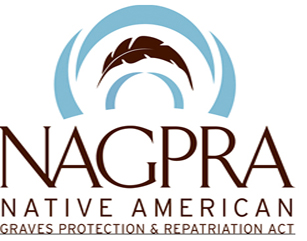
Cultural items reunited with Nez Perce Tribe
Nearly four decades after a highway project unearthed them, a lengthy curation project has repatriated several sets of Native American human remains with the Nez Perce Tribe, along with several thousand artifacts and related documents from north-central Idaho. These items represent a small part of the project carried out by Idaho Transportation Department’s (ITD) partners at the Archaeological Survey of Idaho, Northern Repository (ASINR), located at the University of Idaho.
The human remains and associated objects were excavated in association with the development of the Lenore Rest Area, located on US Highway 12, approximately 27 miles east of Lewiston. That work occurred between 1967 and 1972, and is located within the Nez Perce Indian Reservation.
The identification of human remains and related items presented ITD with new obligations, but also new opportunities to address ITD’s archaeological curation issues.
The Native American Graves Protection and Repatriation Act (NAGPRA) of November 1990 requires federal and state agencies, along with museums and other institutions that receive federal funding to return Native American "cultural items" to lineal descendants and culturally affiliated Indian tribes and Native Hawaiian organizations. Cultural items include human remains, funerary objects, sacred objects, and objects of cultural patrimony.
A program of federal grants assists in the repatriation process and the Secretary of the Interior may assess civil penalties on museums and repositories that fail to comply. The overarching goal of NAGPRA is also to affiliate collections with descendant tribes. The cooperative identification and inventory process unites those in possession of the remains with the tribes (lineal descendants) who accept the repatriated remains.
After the excavation of the remains and articfacts, the collections sat in a backlog at the ASINR until approximately 2005, when ITD began to provide funding for curating and rehabilitation of all of their excavated collections. When human remains were identified in the collections, ASINR staff members, with ITD support and oversight, embarked on the process of inspecting every item to determine if it was a candidate for repatriation. 
Research of the collections revealed a strong relationship with the Nez Perce Tribe, and the official consultation process began in 2013. Tribal representatives travelled to the ASINR to help review artifacts and other objects for inclusion in the repatriation. Once the inventory was completed and approved by the Nez Perce Tribe, ITD and ASINR drafted a notice for publication in the Federal Register announcing their intent to repatriate the cultural items.
At the end of the mandatory 30-day period, no other tribe came forward with a claim. With the process completed, the Nez Perce Tribe was officially in control of the remains of Nez Perce ancestors for the first time.
Although the NAGPRA process can be long, the important work marks an era of greater understanding between federal and state agencies, academic institutions and Native American cultures. U.S. institutions and agencies have struggled to comply with federal legislation and other mandates governing the care and maintenance of archaeological collections.
Work has been deliberately delayed or not even begun, and collections are often left to deteriorate, causing loss of critical data. ITD has worked diligently to be a steward of collections at the ASINR and the two other repositories in Idaho where collections are stored.
Dr. Leah Evans-Janke, Archaeological Collections Manager at ASINR, points out that they have over 750 collections in their facility with over 100 different owners.
"Of all the state and federal agencies who store collections here, ITD is among the most conscientious and responsive we have ever worked with,” said Evans-Janke. “All of their collections in our facility meet or exceed federal curatorial mandates. The work that we have most recently completed represented a significant commitment by ITD, and serves as acknowledgement of an agency's responsibility to the collections generated by their work. Providing support for the repatriation work allows us to carry out some of the most important work we will ever do at the repository."
ITD Archaeologist Marc Munch talks with ASINR employees during a recent visit. "The repatriation of these cultural items to the Nez Perce Tribe has strengthened the working relationship between the Tribe and ITD, and we are pleased these items have been returned," Munch said.
Published 12-18-15